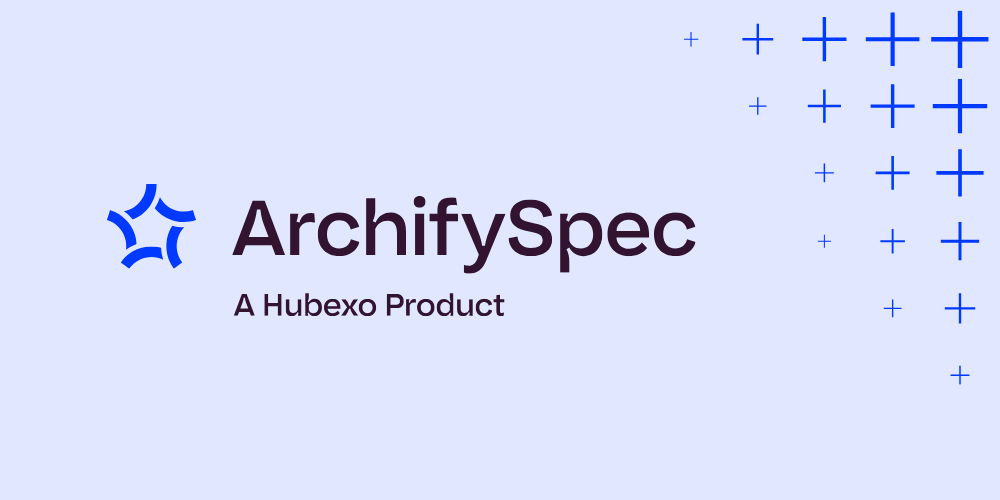ArchifySpec has launched a new Revit plugin for its platform, marking a significant push into BIM-integrated specification workflows across the Australian architecture and design industry.
The new functionality enables live synchronisation between a Revit model and ArchifySpec documentation, bridging the gap between specification, annotation and scheduling.
At the core of this development is the Revit model itself—the digital heartbeat of modern project delivery. By syncing specification data directly with the evolving model, design teams can reduce duplication, avoid discrepancies, and bring more rigour and traceability into documentation.
What once sat in disconnected silos, spreadsheets, PDFs, Word documents, is now tethered to a live, shared source of truth.
As Stephen Hamil, Director of Innovation at Hubexo (ArchifySpec’s parent company), explained during the platform’s BIM Integration Walkthrough Webinar, the goal is not just efficiency, but risk mitigation. His comments echoed those made by legal experts at Lander & Rogers in a recent ArchifySpec interview:
“In disputes, responsibility often falls back on the design team, especially where documentation is unclear… By the time a dispute lands, the damage is usually done. It’s rarely about one big mistake. It’s a series of small oversights that snowball—vague documentation, specification, schedules, drawings, informal decisions, poor record keeping. And that’s the recipe for litigation.” – Charles Thornley, partner at Lander & Rogers.
Hamil, who worked on NBS products in the UK for over 25 years, has played a key role in shaping ArchifySpec’s Australian rollout, bringing with him deep expertise in specification best practice and digital compliance standards.
The plugin, demonstrated in the BIM Integration Walkthrough Webinar by Hamil and Product Manager Dyah Ayu Suliandari, links Revit elements directly to a cloud-based project database within ArchifySpec. That includes material tags, drawing codes, product types and specification references, all of which are pulled dynamically from a single source of truth.
The move is positioned as a response to a growing wave of risk exposure in architectural documentation, fuelled by increasingly complex builds, tighter programs and mounting compliance demands.
“Bad specifications, fire stopping that wasn’t correct or wasn’t followed, and unscrupulous substitutions, these are what went wrong in projects like Docklands and Opal Tower”, Hamil said. “In the UK, Grenfell was no different, badly specified cladding, poor fire detailing, unrecorded changes. The same pattern repeated.”
In practice, ArchifySpec’s Revit plugin addresses this gap by providing real-time annotation and tagging tools within Revit, based on live specification data. It eliminates reliance on outdated static keynote files, allowing firms to maintain consistency between what is designed, documented and built.
“You’re not just drawing lines and adding notes anymore”, said Suliandari. “You’re managing live data with live consequences.”
Built for real-world flexibility
The system supports Revit versions 2023 through 2026 and allows type-based linking, meaning hundreds of Revit instances (such as doors or windows) can be governed by just a few product types, and their corresponding codes, in the spec.
If those codes change, say, DI-301 becomes DI-A, the plugin flags the mismatch and prompts a coordinated update across schedules and annotations.
Annotation formats are fully customisable, and firms can import their own codes and naming conventions. “We’re not asking practices to change how they name things—we’re giving them a tool to reflect it live in the model”, Suliandari said.
Importantly, data flows one way, from ArchifySpec to Revit, ensuring that the source of truth remains intact and editable only by those with appropriate permissions. BIM team members can access relevant schedule data without the ability to edit specifications directly.
The plugin also ties into broader regulatory momentum. Hamil referenced the UK’s post-Grenfell “Golden Thread” model, an end-to-end digital audit trail for design decisions, now gaining interest among Australian certifiers, designers and insurers alike.
“A good spec isn’t just a contract tool”, Hamil said. “It’s your compliance baseline. It’s your record of change. It’s your litigation defence.”
Recent conversations with Tilt Industrial Design, Lander & Rogers and others have pointed to increased pressure on design teams to document decisions with clarity, particularly where scope boundaries, material substitutions or fire detailing are concerned.
Looking ahead, ArchifySpec plans to extend plugin functionality to other BIM platforms, including ArchiCAD, but is focusing first on Revit, which dominates current adoption in architecture practices across Australia.
For now, the message is clear: specs are no longer just back-of-house documentation, they are front-line tools in a risk-averse, digitised construction landscape.
Reflecting on the shift from manual mark-ups to digital integration, Hamil said: “Back then, you’d have to check every drawing by hand. Now, the software flags changes instantly—it’s a game changer for coordination.”
Catch up on the webinar now and gain access to the full discussion.
Wanting to learn more about how ArchifySpec solutions can deliver faster, smarter and safer schedules and specifications? Book a demo today.



